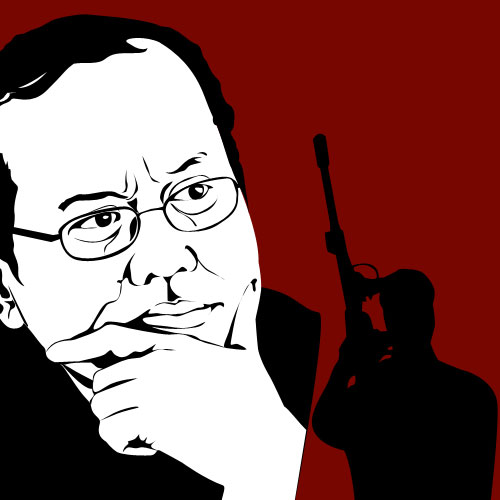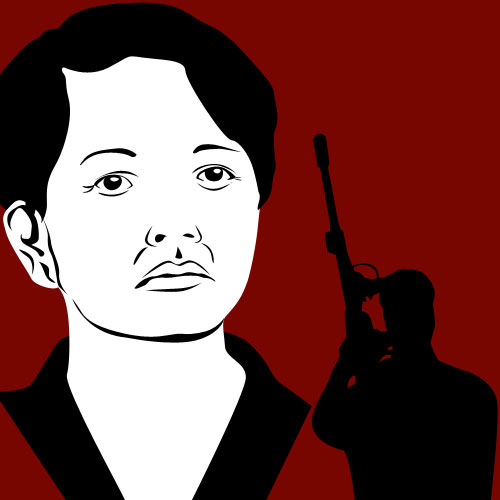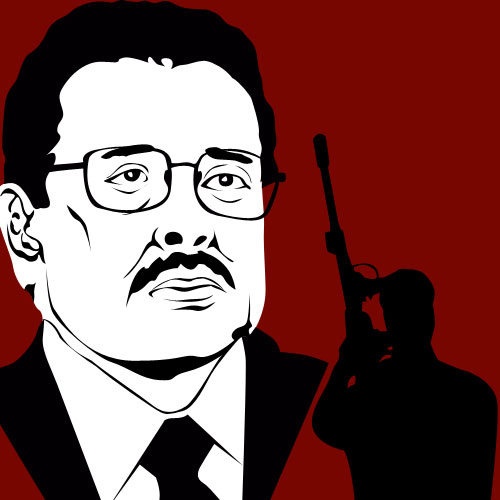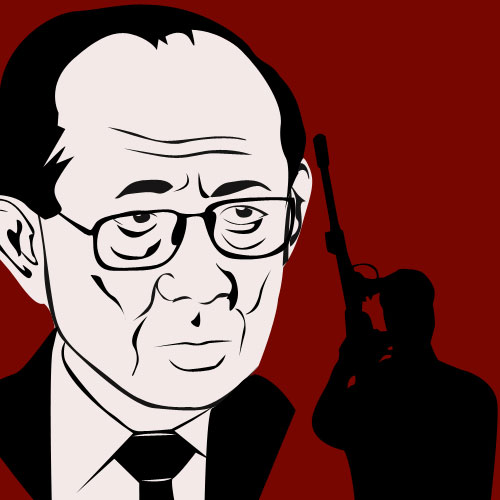Filtered by: Topstories
News
Fighting and talking: A Mindanao conflict timeline
Â
The Moro people’s struggle for self-determination dates back to 1565. The Spanish first coined the term “Moro" to refer to the Muslim Moors of the Iberian Peninsula in Europe, then called by the same name the Muslim inhabitants of southern Philippines who resisted them for over 300 years. In the early 1900s, American colonizers subjugated the whole Philippine archipelago but failed to assimilate the Moro people into the mainstream. The government of the Republic of the Philippines (GRP or GPH) has seen administration after administration taking to the negotiating table to meet with Muslim secessionist groups that want to form a separate Bangsamoro (Islamic State). The Muslim secessionist movement began with the Moro National Liberation Front (MNLF), followed by the Moro Islamic Liberation Front (MILF). The Abu Sayyaf Group (ASG) recruited members from both groups but is now considered more a criminal gang than a political entity. Recent news of conflict in Mindanao and negotiations for a lasting peace have a long and deep history that stretches from the current Aquino Administration to the Marcos regime.  Under President Benigno Aquino III (2010-present) October 2011: In Basilan, Zamboanga Sibugay and Lanao del Norte — all provinces surrounding the Moro Gulf — at least 30 soldiers are killed, with the MILF blamed for violating a ceasefire and engaging the military. Despite the violence, the Philippine government says peace talks will resume in November. August 2011: President Aquino meets with MILF chair Al Haj Murad Ibrahim in Tokyo, Japan, the first Philippine President to meet with the MILF. The move was lauded by observers on both sides.
Under President Benigno Aquino III (2010-present) October 2011: In Basilan, Zamboanga Sibugay and Lanao del Norte — all provinces surrounding the Moro Gulf — at least 30 soldiers are killed, with the MILF blamed for violating a ceasefire and engaging the military. Despite the violence, the Philippine government says peace talks will resume in November. August 2011: President Aquino meets with MILF chair Al Haj Murad Ibrahim in Tokyo, Japan, the first Philippine President to meet with the MILF. The move was lauded by observers on both sides.  Under President Gloria Macapagal-Arroyo (2001-2010) 2010: The GRP and MILF panels sign a declaration to continue future negotiations under the new administration once President Macapagal-Arroyo steps down. 2008: The Supreme Court's decision to trash a Memorandum of Agreement on Ancestral Domain (MOA-AD) in 2008 leads to the failure of peace negotiations, prompting MILF "rogue" leaders – Ameril Umbra Kato, Abdullah ‘Bravo’ Macapaar and Aleem Pangalian – to stage attacks on various civilian targets in North Cotabato and Lanao del Norte. October 2008: The Supreme Court strikes down as unconstitutional the MOA-AD for seeking to establish a state within another sovereign state. Under the MOA-AD, the existing five-province Autonomous Region in Muslim Mindanao would have been expanded by more than 700 additional villages, subject to a plebiscite which would have been held within a year. The new entity, to be called the Bangsamoro Juridical Entity (BJE), would have had its own police and military force and its own judicial system, among others. April 2008: Misuari is allowed to post bail, upon the instructions of the Cabinet security cluster. November 2007: Misuari is arrested in Malaysia and is deported back to the Philippines to answer for the 2001 attacks in several areas in Mindanao. July 2007: At least 14 Marines are beheaded in Basilan. Initially the MILF is blamed, but a government probe later finds the ASG, not MILF, responsible for the beheadings in Basilan. 2006: Peace talks between the GRP and MILF resume. 2005: MILF forces attack government troops in Maguindanao, resulting in the deaths of at least 23 people. 2004: Peace talks resume between the MILF and the GRP, starting discussions on an ancestral domain pact for the expansion of the ARMM territory. 2003: President Arroyo halts the peace talks and declares war against the MILF following a series of bombings in Davao attributed to the secessionist group. 2002: Resumption of formal peace talks in Malaysia results in two agreements: the Implementing Guidelines on the Humanitarian, Rehabilitation and Development Aspects of the 2001 Tripoli Agreement on Peace, and the joint communiqué creating the Ad Hoc Joint Action Group (AHJAG) of the GRP and MILF to run after terrorists and criminals in central Mindanao. November 2001: Former MNLF chief and ARMM Governor Nur Misuari orders his supporters to attack government targets to prevent the holding of the ARMM elections, ushering his exit as governor of the region.
Under President Gloria Macapagal-Arroyo (2001-2010) 2010: The GRP and MILF panels sign a declaration to continue future negotiations under the new administration once President Macapagal-Arroyo steps down. 2008: The Supreme Court's decision to trash a Memorandum of Agreement on Ancestral Domain (MOA-AD) in 2008 leads to the failure of peace negotiations, prompting MILF "rogue" leaders – Ameril Umbra Kato, Abdullah ‘Bravo’ Macapaar and Aleem Pangalian – to stage attacks on various civilian targets in North Cotabato and Lanao del Norte. October 2008: The Supreme Court strikes down as unconstitutional the MOA-AD for seeking to establish a state within another sovereign state. Under the MOA-AD, the existing five-province Autonomous Region in Muslim Mindanao would have been expanded by more than 700 additional villages, subject to a plebiscite which would have been held within a year. The new entity, to be called the Bangsamoro Juridical Entity (BJE), would have had its own police and military force and its own judicial system, among others. April 2008: Misuari is allowed to post bail, upon the instructions of the Cabinet security cluster. November 2007: Misuari is arrested in Malaysia and is deported back to the Philippines to answer for the 2001 attacks in several areas in Mindanao. July 2007: At least 14 Marines are beheaded in Basilan. Initially the MILF is blamed, but a government probe later finds the ASG, not MILF, responsible for the beheadings in Basilan. 2006: Peace talks between the GRP and MILF resume. 2005: MILF forces attack government troops in Maguindanao, resulting in the deaths of at least 23 people. 2004: Peace talks resume between the MILF and the GRP, starting discussions on an ancestral domain pact for the expansion of the ARMM territory. 2003: President Arroyo halts the peace talks and declares war against the MILF following a series of bombings in Davao attributed to the secessionist group. 2002: Resumption of formal peace talks in Malaysia results in two agreements: the Implementing Guidelines on the Humanitarian, Rehabilitation and Development Aspects of the 2001 Tripoli Agreement on Peace, and the joint communiqué creating the Ad Hoc Joint Action Group (AHJAG) of the GRP and MILF to run after terrorists and criminals in central Mindanao. November 2001: Former MNLF chief and ARMM Governor Nur Misuari orders his supporters to attack government targets to prevent the holding of the ARMM elections, ushering his exit as governor of the region.  Under President Joseph Estrada (1998-2001) 2000: Then President Joseph Estrada suspends the peace talks and declares an "all-out war" against the MILF. By July of that year, the MILF's main headquarters, Camp Abubakar, gets overrun by government forces.
Under President Joseph Estrada (1998-2001) 2000: Then President Joseph Estrada suspends the peace talks and declares an "all-out war" against the MILF. By July of that year, the MILF's main headquarters, Camp Abubakar, gets overrun by government forces.  Under President Fidel V. Ramos (1992-1998) 1997: The GRP and MILF begin peace negotiations. September 1996: The GRP and MNLF sign a final peace agreement stating that the ARMM would have a legislative assembly, executive council, special regional security forces, and an economic and financial system.
Under President Fidel V. Ramos (1992-1998) 1997: The GRP and MILF begin peace negotiations. September 1996: The GRP and MNLF sign a final peace agreement stating that the ARMM would have a legislative assembly, executive council, special regional security forces, and an economic and financial system.  Under President Corazon C. Aquino (1986-1992) 1991: Abdurajak Janjalani, a former teacher who studied Islam in the Middle East, forms the Abu Sayyaf Group after reportedly meeting Osama bin Laden in Afghanistan in the 1980s. Janjalani recruited former members of  the Moro National Liberation Front (MNLF) for the more radical and theocratic Abu Sayyaf. 1989: The Autonomous Region in Muslim Mindanao (ARMM) is created under Republic Act No. 6734 or the ARMM Organic Act, pursuant to the 1987 Constitution. 1986:  Early in her term, President Corazon Aquino arranged for a meeting with MNLF chairman Nur Misuari and the MNLF in Sulu, which paved the way for a series of negotiations during her administration. See related story: ARMM History and Organization
Under President Corazon C. Aquino (1986-1992) 1991: Abdurajak Janjalani, a former teacher who studied Islam in the Middle East, forms the Abu Sayyaf Group after reportedly meeting Osama bin Laden in Afghanistan in the 1980s. Janjalani recruited former members of  the Moro National Liberation Front (MNLF) for the more radical and theocratic Abu Sayyaf. 1989: The Autonomous Region in Muslim Mindanao (ARMM) is created under Republic Act No. 6734 or the ARMM Organic Act, pursuant to the 1987 Constitution. 1986:  Early in her term, President Corazon Aquino arranged for a meeting with MNLF chairman Nur Misuari and the MNLF in Sulu, which paved the way for a series of negotiations during her administration. See related story: ARMM History and Organization  Under President Ferdinand Marcos (1965-1986) 1977: Hashim Salamat forms the MILF, a splinter group of the MNLF fighting for an Islamic state; the MNLF was more of a secular movement. The MILF believes that the Bangsamoro freedom fighters should not negotiate with the GRP. 1976: The GRP and MNLF sign the Tripoli Agreement, declaring a ceasefire between the two camps. It also provides that Mindanao would remain a part of the Philippines but that 13 of its provinces would be under the autonomous government for the Bangsamoro People. However, Marcos goes against the agreement and violence ensued. 1974: Jolo, one of the southern Philippines’ main trading centers, is burned down in one of the most notorious battles of the insurgency. News of the tragedy galvanizes Muslims in other countries to pay greater attention to the war. 1969-1976: MNLF wages armed conflict against the Philippine government. 1969: Then University of the Philippines professor Nur Misuari forms the MNLF by tapping into Muslim outrage triggered by the Jabidah massacre. The MNLF seeks to establish a Bangsamoro through force of arms.  1968: As many as 68 Filipino Muslim military trainees are murdered in Corregidor allegedly by soldiers of the Armed Forces of the Philippines, in what is known as the “Jabidah Massacre."  The trainees were part of a plot by the Marcos administration to infiltrate Sabah and foment a rebellion. They were killed when some trainees objected to the mission. With research by GMA News Research, Kim Tan, and Paolo Ferrer; edited by Marnie Tonson, TJ Dimacali, and Howie Severino; art by Analyn Perez
Under President Ferdinand Marcos (1965-1986) 1977: Hashim Salamat forms the MILF, a splinter group of the MNLF fighting for an Islamic state; the MNLF was more of a secular movement. The MILF believes that the Bangsamoro freedom fighters should not negotiate with the GRP. 1976: The GRP and MNLF sign the Tripoli Agreement, declaring a ceasefire between the two camps. It also provides that Mindanao would remain a part of the Philippines but that 13 of its provinces would be under the autonomous government for the Bangsamoro People. However, Marcos goes against the agreement and violence ensued. 1974: Jolo, one of the southern Philippines’ main trading centers, is burned down in one of the most notorious battles of the insurgency. News of the tragedy galvanizes Muslims in other countries to pay greater attention to the war. 1969-1976: MNLF wages armed conflict against the Philippine government. 1969: Then University of the Philippines professor Nur Misuari forms the MNLF by tapping into Muslim outrage triggered by the Jabidah massacre. The MNLF seeks to establish a Bangsamoro through force of arms.  1968: As many as 68 Filipino Muslim military trainees are murdered in Corregidor allegedly by soldiers of the Armed Forces of the Philippines, in what is known as the “Jabidah Massacre."  The trainees were part of a plot by the Marcos administration to infiltrate Sabah and foment a rebellion. They were killed when some trainees objected to the mission. With research by GMA News Research, Kim Tan, and Paolo Ferrer; edited by Marnie Tonson, TJ Dimacali, and Howie Severino; art by Analyn Perez
 Under President Benigno Aquino III (2010-present) October 2011: In Basilan, Zamboanga Sibugay and Lanao del Norte — all provinces surrounding the Moro Gulf — at least 30 soldiers are killed, with the MILF blamed for violating a ceasefire and engaging the military. Despite the violence, the Philippine government says peace talks will resume in November. August 2011: President Aquino meets with MILF chair Al Haj Murad Ibrahim in Tokyo, Japan, the first Philippine President to meet with the MILF. The move was lauded by observers on both sides.
Under President Benigno Aquino III (2010-present) October 2011: In Basilan, Zamboanga Sibugay and Lanao del Norte — all provinces surrounding the Moro Gulf — at least 30 soldiers are killed, with the MILF blamed for violating a ceasefire and engaging the military. Despite the violence, the Philippine government says peace talks will resume in November. August 2011: President Aquino meets with MILF chair Al Haj Murad Ibrahim in Tokyo, Japan, the first Philippine President to meet with the MILF. The move was lauded by observers on both sides.  Under President Gloria Macapagal-Arroyo (2001-2010) 2010: The GRP and MILF panels sign a declaration to continue future negotiations under the new administration once President Macapagal-Arroyo steps down. 2008: The Supreme Court's decision to trash a Memorandum of Agreement on Ancestral Domain (MOA-AD) in 2008 leads to the failure of peace negotiations, prompting MILF "rogue" leaders – Ameril Umbra Kato, Abdullah ‘Bravo’ Macapaar and Aleem Pangalian – to stage attacks on various civilian targets in North Cotabato and Lanao del Norte. October 2008: The Supreme Court strikes down as unconstitutional the MOA-AD for seeking to establish a state within another sovereign state. Under the MOA-AD, the existing five-province Autonomous Region in Muslim Mindanao would have been expanded by more than 700 additional villages, subject to a plebiscite which would have been held within a year. The new entity, to be called the Bangsamoro Juridical Entity (BJE), would have had its own police and military force and its own judicial system, among others. April 2008: Misuari is allowed to post bail, upon the instructions of the Cabinet security cluster. November 2007: Misuari is arrested in Malaysia and is deported back to the Philippines to answer for the 2001 attacks in several areas in Mindanao. July 2007: At least 14 Marines are beheaded in Basilan. Initially the MILF is blamed, but a government probe later finds the ASG, not MILF, responsible for the beheadings in Basilan. 2006: Peace talks between the GRP and MILF resume. 2005: MILF forces attack government troops in Maguindanao, resulting in the deaths of at least 23 people. 2004: Peace talks resume between the MILF and the GRP, starting discussions on an ancestral domain pact for the expansion of the ARMM territory. 2003: President Arroyo halts the peace talks and declares war against the MILF following a series of bombings in Davao attributed to the secessionist group. 2002: Resumption of formal peace talks in Malaysia results in two agreements: the Implementing Guidelines on the Humanitarian, Rehabilitation and Development Aspects of the 2001 Tripoli Agreement on Peace, and the joint communiqué creating the Ad Hoc Joint Action Group (AHJAG) of the GRP and MILF to run after terrorists and criminals in central Mindanao. November 2001: Former MNLF chief and ARMM Governor Nur Misuari orders his supporters to attack government targets to prevent the holding of the ARMM elections, ushering his exit as governor of the region.
Under President Gloria Macapagal-Arroyo (2001-2010) 2010: The GRP and MILF panels sign a declaration to continue future negotiations under the new administration once President Macapagal-Arroyo steps down. 2008: The Supreme Court's decision to trash a Memorandum of Agreement on Ancestral Domain (MOA-AD) in 2008 leads to the failure of peace negotiations, prompting MILF "rogue" leaders – Ameril Umbra Kato, Abdullah ‘Bravo’ Macapaar and Aleem Pangalian – to stage attacks on various civilian targets in North Cotabato and Lanao del Norte. October 2008: The Supreme Court strikes down as unconstitutional the MOA-AD for seeking to establish a state within another sovereign state. Under the MOA-AD, the existing five-province Autonomous Region in Muslim Mindanao would have been expanded by more than 700 additional villages, subject to a plebiscite which would have been held within a year. The new entity, to be called the Bangsamoro Juridical Entity (BJE), would have had its own police and military force and its own judicial system, among others. April 2008: Misuari is allowed to post bail, upon the instructions of the Cabinet security cluster. November 2007: Misuari is arrested in Malaysia and is deported back to the Philippines to answer for the 2001 attacks in several areas in Mindanao. July 2007: At least 14 Marines are beheaded in Basilan. Initially the MILF is blamed, but a government probe later finds the ASG, not MILF, responsible for the beheadings in Basilan. 2006: Peace talks between the GRP and MILF resume. 2005: MILF forces attack government troops in Maguindanao, resulting in the deaths of at least 23 people. 2004: Peace talks resume between the MILF and the GRP, starting discussions on an ancestral domain pact for the expansion of the ARMM territory. 2003: President Arroyo halts the peace talks and declares war against the MILF following a series of bombings in Davao attributed to the secessionist group. 2002: Resumption of formal peace talks in Malaysia results in two agreements: the Implementing Guidelines on the Humanitarian, Rehabilitation and Development Aspects of the 2001 Tripoli Agreement on Peace, and the joint communiqué creating the Ad Hoc Joint Action Group (AHJAG) of the GRP and MILF to run after terrorists and criminals in central Mindanao. November 2001: Former MNLF chief and ARMM Governor Nur Misuari orders his supporters to attack government targets to prevent the holding of the ARMM elections, ushering his exit as governor of the region.  Under President Joseph Estrada (1998-2001) 2000: Then President Joseph Estrada suspends the peace talks and declares an "all-out war" against the MILF. By July of that year, the MILF's main headquarters, Camp Abubakar, gets overrun by government forces.
Under President Joseph Estrada (1998-2001) 2000: Then President Joseph Estrada suspends the peace talks and declares an "all-out war" against the MILF. By July of that year, the MILF's main headquarters, Camp Abubakar, gets overrun by government forces.  Under President Fidel V. Ramos (1992-1998) 1997: The GRP and MILF begin peace negotiations. September 1996: The GRP and MNLF sign a final peace agreement stating that the ARMM would have a legislative assembly, executive council, special regional security forces, and an economic and financial system.
Under President Fidel V. Ramos (1992-1998) 1997: The GRP and MILF begin peace negotiations. September 1996: The GRP and MNLF sign a final peace agreement stating that the ARMM would have a legislative assembly, executive council, special regional security forces, and an economic and financial system.  Under President Corazon C. Aquino (1986-1992) 1991: Abdurajak Janjalani, a former teacher who studied Islam in the Middle East, forms the Abu Sayyaf Group after reportedly meeting Osama bin Laden in Afghanistan in the 1980s. Janjalani recruited former members of  the Moro National Liberation Front (MNLF) for the more radical and theocratic Abu Sayyaf. 1989: The Autonomous Region in Muslim Mindanao (ARMM) is created under Republic Act No. 6734 or the ARMM Organic Act, pursuant to the 1987 Constitution. 1986:  Early in her term, President Corazon Aquino arranged for a meeting with MNLF chairman Nur Misuari and the MNLF in Sulu, which paved the way for a series of negotiations during her administration. See related story: ARMM History and Organization
Under President Corazon C. Aquino (1986-1992) 1991: Abdurajak Janjalani, a former teacher who studied Islam in the Middle East, forms the Abu Sayyaf Group after reportedly meeting Osama bin Laden in Afghanistan in the 1980s. Janjalani recruited former members of  the Moro National Liberation Front (MNLF) for the more radical and theocratic Abu Sayyaf. 1989: The Autonomous Region in Muslim Mindanao (ARMM) is created under Republic Act No. 6734 or the ARMM Organic Act, pursuant to the 1987 Constitution. 1986:  Early in her term, President Corazon Aquino arranged for a meeting with MNLF chairman Nur Misuari and the MNLF in Sulu, which paved the way for a series of negotiations during her administration. See related story: ARMM History and Organization  Under President Ferdinand Marcos (1965-1986) 1977: Hashim Salamat forms the MILF, a splinter group of the MNLF fighting for an Islamic state; the MNLF was more of a secular movement. The MILF believes that the Bangsamoro freedom fighters should not negotiate with the GRP. 1976: The GRP and MNLF sign the Tripoli Agreement, declaring a ceasefire between the two camps. It also provides that Mindanao would remain a part of the Philippines but that 13 of its provinces would be under the autonomous government for the Bangsamoro People. However, Marcos goes against the agreement and violence ensued. 1974: Jolo, one of the southern Philippines’ main trading centers, is burned down in one of the most notorious battles of the insurgency. News of the tragedy galvanizes Muslims in other countries to pay greater attention to the war. 1969-1976: MNLF wages armed conflict against the Philippine government. 1969: Then University of the Philippines professor Nur Misuari forms the MNLF by tapping into Muslim outrage triggered by the Jabidah massacre. The MNLF seeks to establish a Bangsamoro through force of arms.  1968: As many as 68 Filipino Muslim military trainees are murdered in Corregidor allegedly by soldiers of the Armed Forces of the Philippines, in what is known as the “Jabidah Massacre."  The trainees were part of a plot by the Marcos administration to infiltrate Sabah and foment a rebellion. They were killed when some trainees objected to the mission. With research by GMA News Research, Kim Tan, and Paolo Ferrer; edited by Marnie Tonson, TJ Dimacali, and Howie Severino; art by Analyn Perez
Under President Ferdinand Marcos (1965-1986) 1977: Hashim Salamat forms the MILF, a splinter group of the MNLF fighting for an Islamic state; the MNLF was more of a secular movement. The MILF believes that the Bangsamoro freedom fighters should not negotiate with the GRP. 1976: The GRP and MNLF sign the Tripoli Agreement, declaring a ceasefire between the two camps. It also provides that Mindanao would remain a part of the Philippines but that 13 of its provinces would be under the autonomous government for the Bangsamoro People. However, Marcos goes against the agreement and violence ensued. 1974: Jolo, one of the southern Philippines’ main trading centers, is burned down in one of the most notorious battles of the insurgency. News of the tragedy galvanizes Muslims in other countries to pay greater attention to the war. 1969-1976: MNLF wages armed conflict against the Philippine government. 1969: Then University of the Philippines professor Nur Misuari forms the MNLF by tapping into Muslim outrage triggered by the Jabidah massacre. The MNLF seeks to establish a Bangsamoro through force of arms.  1968: As many as 68 Filipino Muslim military trainees are murdered in Corregidor allegedly by soldiers of the Armed Forces of the Philippines, in what is known as the “Jabidah Massacre."  The trainees were part of a plot by the Marcos administration to infiltrate Sabah and foment a rebellion. They were killed when some trainees objected to the mission. With research by GMA News Research, Kim Tan, and Paolo Ferrer; edited by Marnie Tonson, TJ Dimacali, and Howie Severino; art by Analyn PerezMore Videos
Most Popular




